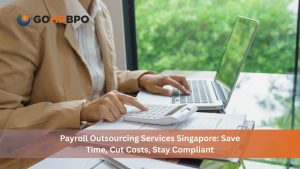Singapore, a thriving economic hub, offers a compelling work environment. However, understanding the intricacies of employee benefits in this dynamic city-state is crucial for both employers and employees alike. This blog delves into the essential aspects of employee benefits in Singapore, covering statutory entitlements, voluntary perks, and the evolving landscape of workplace benefits.
Employee Benefits | Statutory Benefits: The Legal Framework
Singapore has a robust legal framework governing employee benefits, ensuring a minimum standard of protection for workers. Key statutory benefits include:
- Central Provident Fund (CPF): This mandatory retirement savings scheme requires both employers and employees to contribute a portion of their salary. CPF funds can be used for housing, healthcare, and retirement.
- Paid Leave: Employees are entitled to annual leave, sick leave, and maternity/paternity leave. The duration of these leaves varies based on factors like length of service and the employee’s status (Singaporean, Permanent Resident, or Foreign Worker).
- Medical Benefits: While not mandatory for all employees, Singapore citizens and Permanent Residents have access to subsidized healthcare through MediSave, a portion of their CPF contributions.
- Work Injury Compensation: Employers are required to provide workers’ compensation insurance to cover medical expenses and loss of income due to work-related injuries or diseases.
Employee Benefits | Voluntary Benefits: Going Beyond the Basics
To attract and retain top talent, many Singaporean companies offer additional voluntary benefits. These perks can range from healthcare enhancements to lifestyle-oriented offerings. Common voluntary benefits include:
- Comprehensive Healthcare Coverage: This often includes private medical insurance plans that provide broader coverage than basic government schemes, including outpatient care, dental, and vision benefits.
- Group Term Life Insurance: Providing financial security for employees and their families in case of unforeseen circumstances.
- Disability Insurance: Protecting employees from financial hardship in case of accidents or illnesses that result in disability.
- Flexible Benefits Plans: Allowing employees to choose from a variety of benefits based on their individual needs and preferences.
- Wellness Programs: Promoting employee well-being through initiatives like gym memberships, health screenings, and stress management workshops.
- Professional Development Opportunities: Investing in employee growth through training, certifications, and tuition reimbursement.
- Work-Life Balance Initiatives: Flexible work arrangements, childcare subsidies, and paid parental leave are becoming increasingly popular.
Employee Benefits: The Evolving Benefits Landscape
Singapore’s dynamic business environment is driving changes in employee benefits. To stay competitive, employers are focusing on benefits that align with the evolving needs and preferences of their workforce. Some emerging trends include:
- Financial Wellness: Offering financial planning tools, debt counseling, and retirement planning assistance.
- Mental Health Support: Providing access to mental health professionals and resources to address employee well-being.
- Remote Work Support: Providing necessary equipment, internet subsidies, and ergonomic setups for remote workers.
- Personalized Benefits: Tailoring benefit packages to individual employee needs and preferences.
- Sustainability Initiatives: Incorporating eco-friendly practices and promoting environmental responsibility.
Suggested Read: Workplace Mental Health gets A Boost
How GOHRBPO Can Provide Employee Benefits Through Payroll Services
While GOHRBPO, as a payroll service provider, primarily focuses on the accurate and timely processing of salaries, they can indirectly contribute to employee benefits administration through the following ways:
1. Benefits Data Management:
- Accurate record-keeping: GOHRBPO can maintain comprehensive records of employee benefits, including eligibility, enrollment, and deductions.
- Data integration: They can integrate benefits data with payroll systems for efficient processing and reporting.
2. Benefit Deductions:
- Accurate and timely deductions: GOHRBPO can ensure that benefit deductions (like insurance premiums, retirement contributions) are calculated and deducted correctly from employee paychecks.
- Compliance with regulations: They can adhere to tax and regulatory requirements related to benefit deductions.
3. Benefit Communication:
- Benefit information dissemination: While not providing benefits directly, GOHRBPO can assist in communicating benefit information to employees through payslips, employee portals, or other communication channels.
- Benefit enrollment support: They can provide support to employees during benefit enrollment periods by answering questions and guiding them through the process.
4. Compliance and Reporting:
- Benefit-related compliance: GOHRBPO can help ensure compliance with various benefit-related regulations, such as COBRA, HIPAA, and ERISA.
- Benefit reporting: They can generate reports on benefit deductions, utilization, and other relevant data for analysis and compliance purposes.
5. Integration with Benefit Providers:
- Data exchange: GOHRBPO can facilitate data exchange between employers and benefit providers to ensure accurate and timely information flow.
- Streamlined processes: They can streamline benefit administration processes by integrating payroll systems with benefit platforms.
Conclusion
Employee benefits play a crucial role in attracting, motivating, and retaining top talent in Singapore. Understanding both statutory entitlements and voluntary perks is essential for employers to create competitive and employee-centric benefit packages. As the workplace continues to evolve, staying updated on emerging trends will be key to ensuring that benefit offerings remain relevant and effective.
By prioritizing employee well-being, financial security, and professional growth, Singaporean companies can cultivate a positive and productive work environment that contributes to overall business success.






